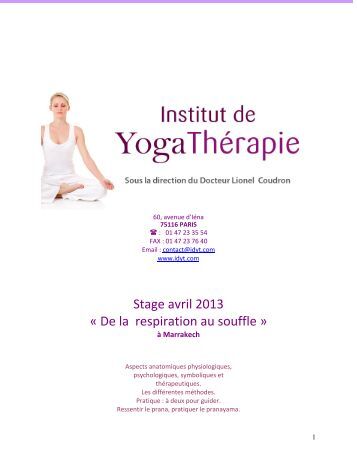Kriya Yoga Of Babaji 144 Techniques Pdf Files
Posted : adminOn 6/6/2018Kriya Yoga and the Future of the World. Jesus, Babaji, Lahiri Mahasaya, Sri Yukteswarji. Kriya Yoga, then you will feel. Download as PDF, TXT or read online. We provide copy of. 144 kriya yoga techniques babaji in digital format, so the resources that you find are reliable. There are also many. Ebooks of related with 144 kriya yoga techniques babaji. Cardcaptor Sakura Movie 2 Eng Sub Free Download. You can find book 144 kriya yoga techniques babaji in our library and other format like: 144 kriya yoga techniques babaji pdf file.

Babajis Kriya Yoga Pdf, Babajis Kriya Yoga Docx, Babajis Kriya Yoga Epub, Babajis Kriya. Install Ilbc Codec Asterisk Symbol. We Offer Free Access Babajis Kriya Yoga Pdf Or Babajis Kriya Yoga Ebook File Like. Babajis Kriya Yoga. SAA Ramaiah who has BABAJI'S KRIYA YOGA 144 TECHNIQUES [Notes from the lessons of.
• • • Tantra (: तन्त्र; literally 'loom, weave, system') denotes the esoteric traditions of Hinduism and Buddhism that co-developed most likely about the middle of 1st millennium CE. The term tantra, in the Indian traditions, also means any systematic broadly applicable 'text, theory, system, method, instrument, technique or practice'. In Hinduism, the tantra tradition is most often associated with its goddess tradition called, followed by and. In Buddhism, the tradition is known for its extensive tantra ideas and practices. Tantric Hindu and Buddhist traditions have influenced other religious traditions such as,, the Tibetan tradition,, and the Japanese tradition. Tantra as genre of literature in Hinduism have been influential to its arts, and building practices.
Hindu, and iconography are tantric in nature. The Hindu texts that describe these topics are called Tantras,. In Buddhism, its tantra-genre literature has influenced the artworks in Tibet, historic cave temples of India, and imagery in southeast Asia. Contents • • • • • • • • • • • • • • • • • • • • • • • • • • • • • • • • • • • • Etymology [ ] Tantra (: तन्त्र) literally means 'loom, warp, weave'. The connotation of the word tantra to mean an esoteric practice or religious ritualism is a colonial era European invention. The term is based on the metaphor of weaving, states Ron Barrett, where the Sanskrit root tan means the warping of threads on a loom.

It implies 'interweaving of traditions and teachings as threads' into a text, technique or practice. The word appears in the hymns of the such as in 10.71, with the meaning of '. It is found in many other Vedic era texts, such as in section 10.7.42 of the and many. In these and post-Vedic texts, the contextual meaning of Tantra is that which is 'principal or essential part, main point, model, framework, feature'. In the and epics of Hinduism (and Jainism), the term means 'doctrine, rule, theory, method, technique or chapter' and the word appears both as a separate word and as a common suffix, such as atma-tantra meaning 'doctrine or theory of (soul, self)'. The term “Tantra” after about 500 BCE, in Buddhism, Hinduism and Jainism is a bibliographic category, just like the word (which means 'sewing together', mirroring the metaphor of 'weaving together' implied by Tantra).
The same Buddhist texts are sometimes referred to as tantra or sutra; for example, Vairocabhisambodhi-tantra is also referred to as Vairocabhisambodhi-sutra. The various contextual meaning of the word Tantra varies with the Indian text, and is summarized in the appended table. Appearance of the term 'Tantra' in Indian texts Period Text or author Contextual meaning of tantra 1700–1100 BCE Ṛgveda X, 71.9 Loom (or weaving device) 1700-?
BCE, Tandya Brahmana Essence (or 'main part', perhaps denoting the quintessence of the Sastras) 1200-900 BCE X, 7.42 Loom (or weaving) 1400-1000 BCE, Taittiriya Brahmana 11.5.5.3 Loom (or weaving) 600-500 BCE in 1.4.54 and 5.2.70 Warp (weaving), loom pre-500 BCE Essence (or main part; see above) 350-283 BCE on Science; system or 300 CE author of ( kārikā 70) Doctrine (identifies as a tantra) 320 CE Practices and rituals 320-400 CE Poet on Deep understanding or mastery of a topic 423 CE Gangdhar stone inscription in Worship techniques ( Tantrodbhuta) Dubious link to Tantric practices. 550 CE Sabarasvamin's commentary on Mimamsa Sutra 11.1.1, 11.4.1 etc. Thread, text; beneficial action or thing 500-600 CE (Vol. 18–21: Tantra (Vajrayāna) or Set of doctrines or practices 600 CE Kāmikāgama or Kāmikā-tantra Extensive knowledge of principles of reality 606–647 CE Sanskrit scholar and poet (in Harṣacarita and in ), in 's Cārudatta and in 's Set of sites and worship methods to goddesses. 975–1025 CE Philosopher in his Set of doctrines or practices, teachings, texts, system (sometimes called ) 1150–1200 CE Jayaratha, 's commentator on Set of doctrines or practices, teachings 1690–1785 CE Bhāskararāya (philiosopher) System of thought or set of doctrines or practices, a canon Definition [ ] Ancient and medieval era [ ] The earliest definitions and expositions on Tantra come from the ancient texts of Panini, Patanjali and the literature of the language-focussed, ritual-oriented school of Hindu philosophy. The 5th-century BCE scholar Panini in his Sutra 1.4.54–55 of Sanskrit grammar, cryptically explains tantra through the example of 'Sva-tantra' (Sanskrit: स्वतन्त्र), which he states means 'independent' or a person who is his own 'warp, cloth, weaver, promoter, karta (actor)'. Patanjali in his quotes and accepts Panini's definition, then discusses or mentions it at a greater length, in 18 instances, stating that its metaphorical definition of 'warp (weaving), extended cloth' is relevant to many contexts. La Leggenda Del Pianista Sulloceano Download Ita Gratis.